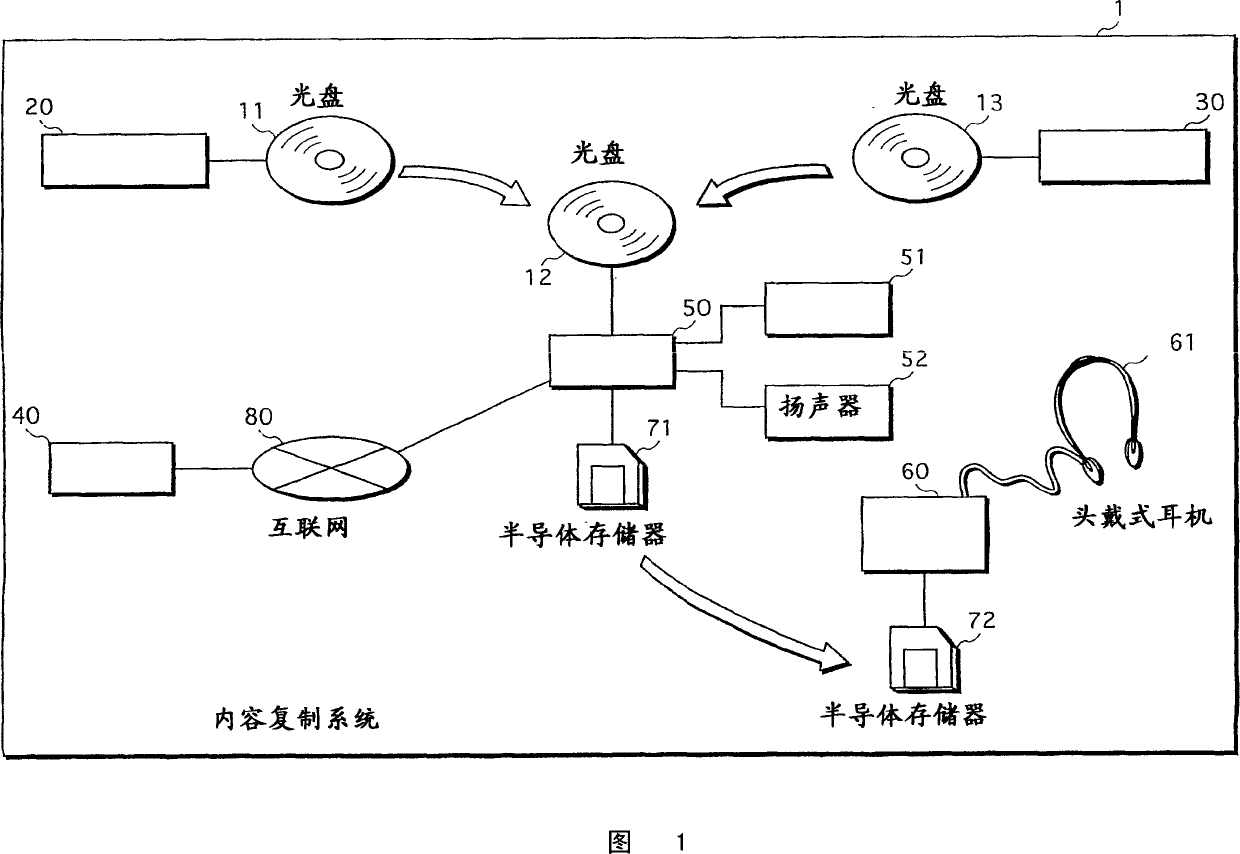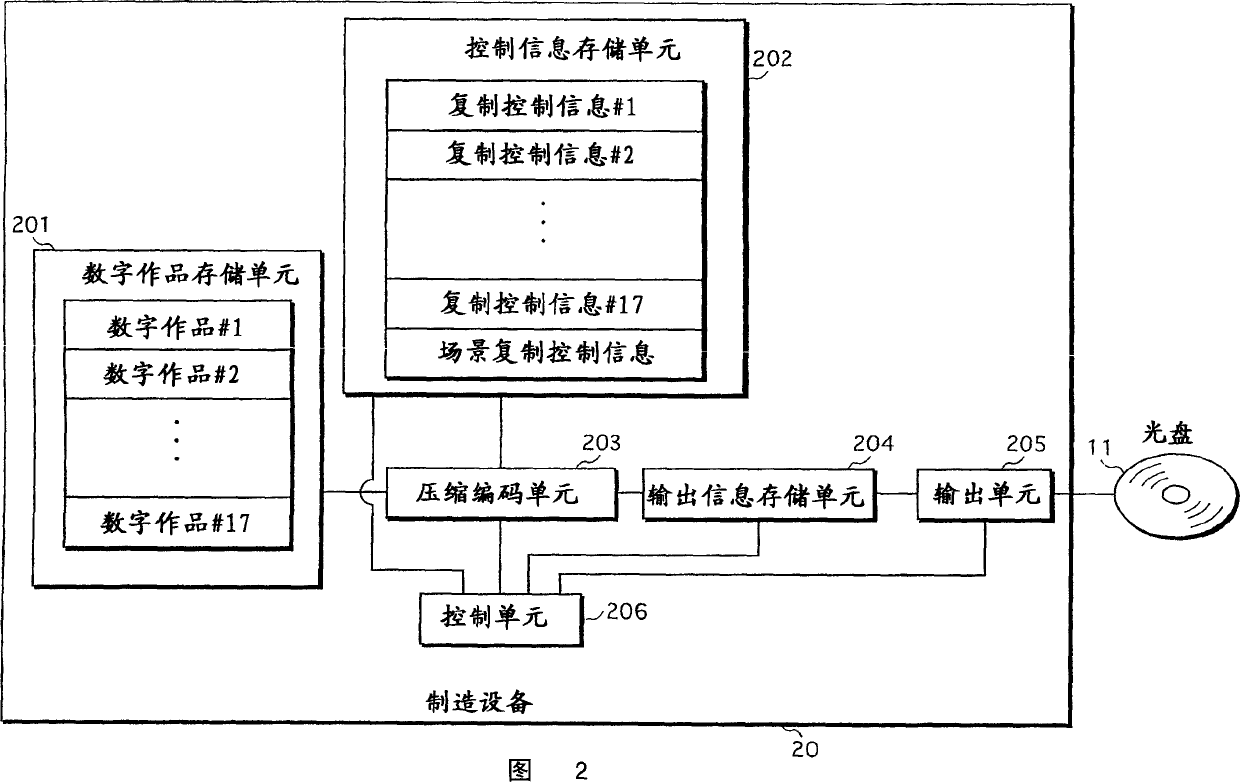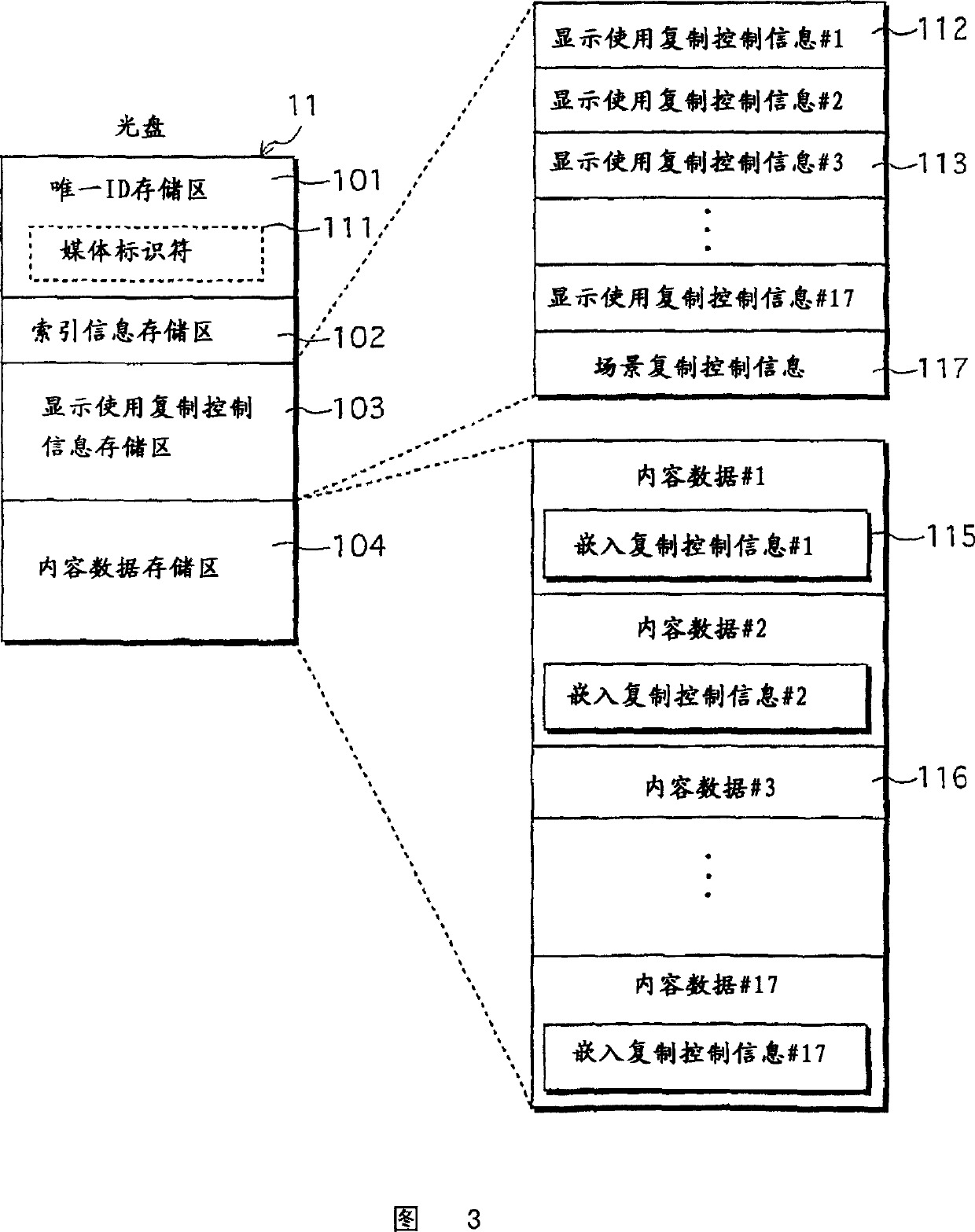Recording medium and copy apparatus
A technology for copying equipment and recording media, applied in data recording, record carrier type, recording signal processing, etc., and can solve problems such as wasting time
- Summary
- Abstract
- Description
- Claims
- Application Information
AI Technical Summary
Problems solved by technology
Method used
Image
Examples
Embodiment Construction
[0035] A content reproduction system 1 as an embodiment of the present invention is described below.
[0036] 1. Structure of content reproduction system 1
[0037] The content reproduction system 1 is composed of a production device 20 , a production device 30 , a server device 40 , a reproduction device 50 and a playback device 60 .
[0038] The manufacturer of the optical disc on which the content is recorded has the ownership of the manufacturing device 20 . The manufacturing apparatus 20 manufactures the optical disc 11, records one or more contents on the optical disc 11, and one or more pieces of copy control information (hereinafter, referred to as "display use copy control information") for display purposes, wherein the copy control The information corresponds to the content respectively. For example, each content is music digital data, and copy control information is embedded in the digital data (hereinafter referred to as "embedded copy control information"). Her...
PUM
 Login to View More
Login to View More Abstract
Description
Claims
Application Information
 Login to View More
Login to View More - R&D
- Intellectual Property
- Life Sciences
- Materials
- Tech Scout
- Unparalleled Data Quality
- Higher Quality Content
- 60% Fewer Hallucinations
Browse by: Latest US Patents, China's latest patents, Technical Efficacy Thesaurus, Application Domain, Technology Topic, Popular Technical Reports.
© 2025 PatSnap. All rights reserved.Legal|Privacy policy|Modern Slavery Act Transparency Statement|Sitemap|About US| Contact US: help@patsnap.com



